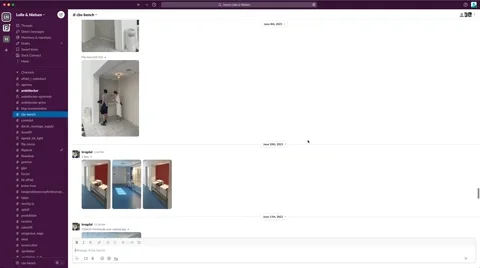Email and texts are still useful, but Slack has given us a whole new arena for fast-paced communication
Once upon a time, you would send a text or an email, if you had an urgent question at the workspace. But who should you text? And how many could you CC on the mail if it shouldn’t clutter communication streams?
We’ve been using Slack as a supplement for our communication for several years, and it has become a very beneficial tool. Here, we just add the relevant stakeholder to a separate channel for each project and let the communication control itself here. Which is a much more agile way to communicate than we’ve been used to.
More relevant communication
Both mail and texts are still useful tools in some regards, but we’ve found Slack to be much more powerful for fast messaging. It actually means that we are communicating more: Some of the questions that would be too small for the old means of communication can quickly surface and be answered in Slack. This means a small issue can quickly be solved.
At the same time, Slack makes communication much more visual, as it’s easy to upload photos or videos.
This is also true when we bring in external partners for our projects. They get invited to the channel where communication can flow more freely which often results in a closer collaboration even though we might be split across multiple physical locations.
Informal culture
The fast-paced and informal nature of Slack also makes it a great tool for more collegial conversations about non-work-related stuff. And a more casual kind of communication just adds to a nice culture in the workspace.
Slack might not be the perfect fit for companies of all shapes and sizes. But there’s no doubt that it has been the perfect fit for us.

